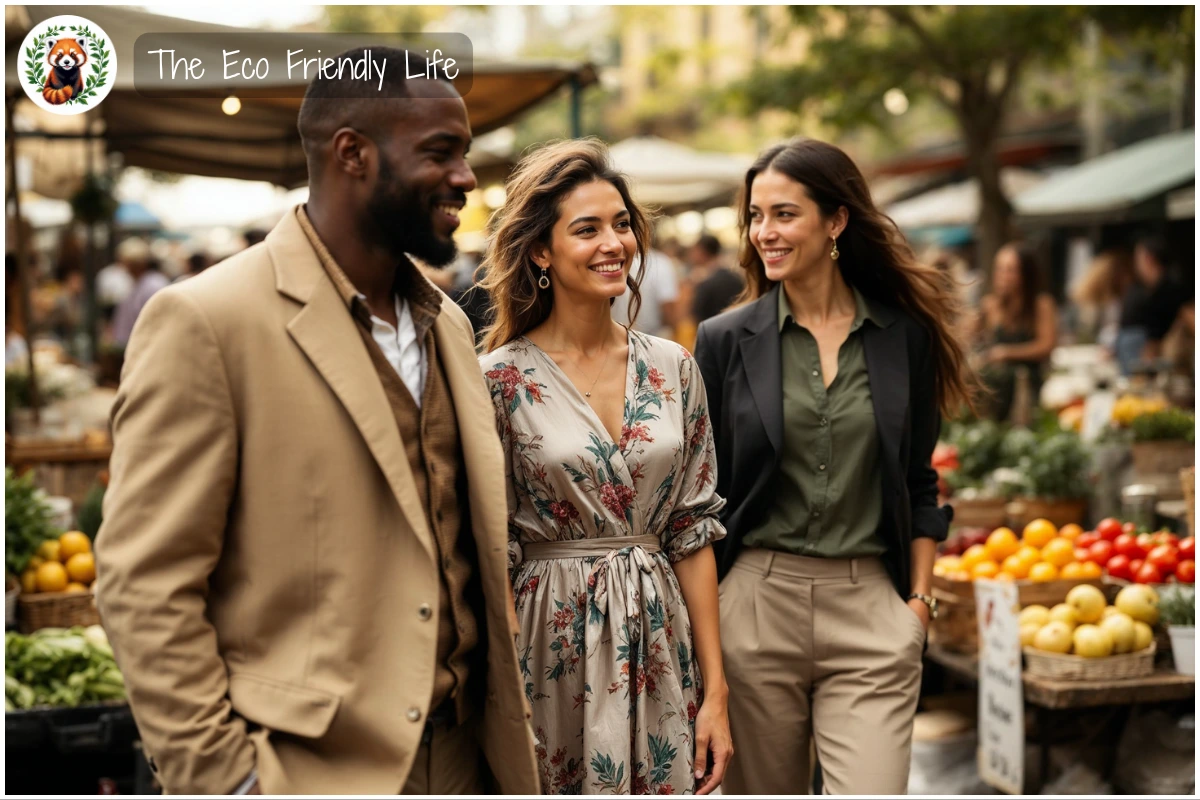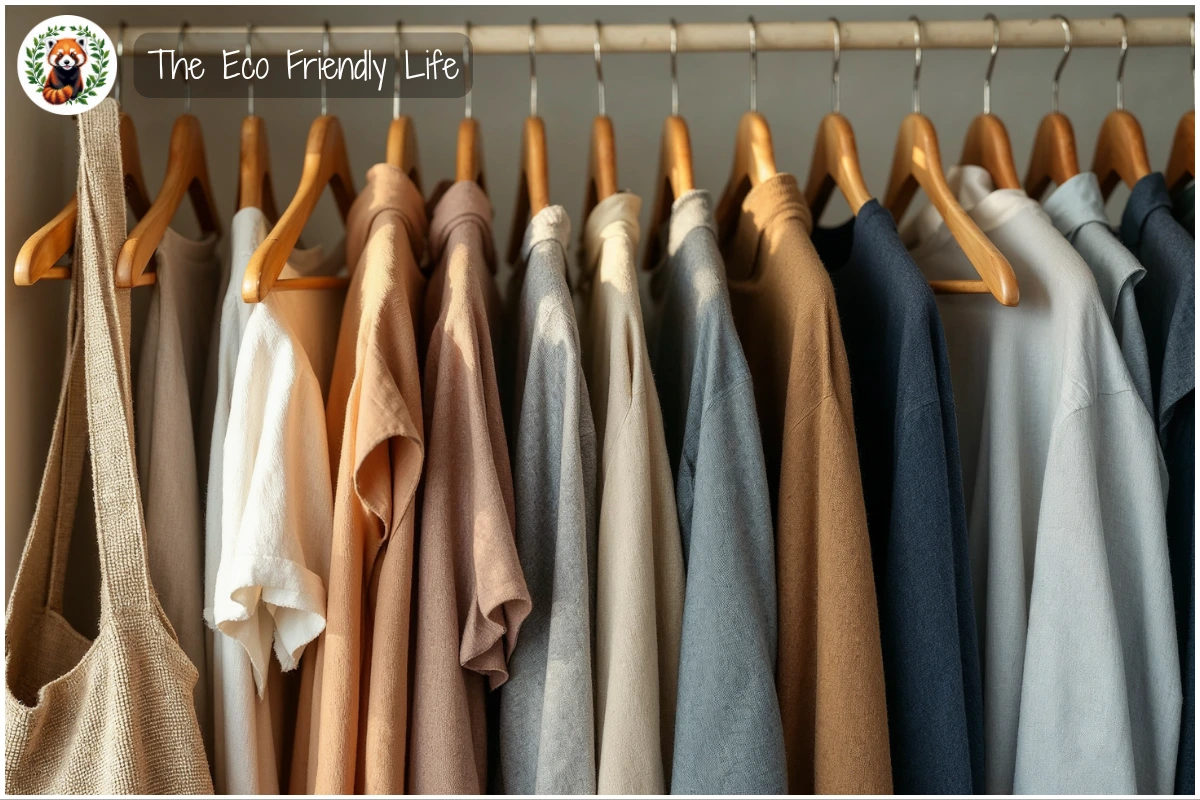The fashion industry stands at a critical crossroads, where style meets responsibility and consumer choices shape our planet’s future. As awareness grows about the devastating environmental and social costs of fast fashion, millions of people worldwide are seeking alternatives that don’t compromise their values or the wellbeing of our Earth. Understanding sustainable fashion has become essential for anyone who wants to make informed choices about their wardrobe while contributing to positive change.
Hi, I’m Katrina, and like many of you, I used to think sustainable fashion meant sacrificing style for conscience. After years of researching and practicing sustainable living, I’ve discovered that choosing eco-friendly clothing options actually enhances personal style while supporting ethical practices and environmental protection. Through this comprehensive guide, I’ll share everything you need to know about sustainable fashion and provide practical steps you can take today to transform your wardrobe into a force for good. Let’s explore how your clothing choices can become powerful tools for creating a more sustainable world.
Understanding Sustainable Fashion: Beyond the Buzzwords

Defining the Movement: Sustainable fashion represents a comprehensive approach to clothing that considers environmental, social, and economic impacts throughout the entire lifecycle of garments. Rather than focusing solely on trends and low prices, this movement emphasizes ethical production practices, environmental responsibility, and long-term thinking about how we produce, consume, and dispose of clothing.
The Scope of Sustainability: True sustainable fashion encompasses multiple dimensions, including the use of eco-friendly materials, fair labor practices, reduced water consumption, minimal chemical usage, and design for longevity. This holistic approach means that sustainable brands must consider everything from the farming practices used to grow cotton to the working conditions in factories and the eventual disposal or recycling of finished garments.
Growing Consumer Awareness: The demand for sustainable fashion has evolved significantly from its early association with “hippy” aesthetics to mainstream consumer preferences. Modern sustainable fashion combines environmental consciousness with contemporary style, making it accessible and appealing to diverse demographics who want to look good while doing good.
Economic Implications: The global fashion industry, valued at approximately $1.2 trillion annually with projections reaching $2.25 trillion by 2025, faces increasing pressure to adopt sustainable practices. This shift represents both a challenge and an opportunity for brands to innovate while meeting growing consumer expectations for transparency and responsibility.
Understanding these foundational concepts sets the stage for exploring why traditional fashion practices have become unsustainable and what specific environmental challenges the industry must address.
The Environmental Crisis: Why Fashion Needs a Sustainable Revolution
Water Consumption Crisis: The fashion industry ranks as the second most water-intensive industry globally, consuming approximately 93 billion cubic meters of water annually – enough to meet the needs of 5 million people. To put this in perspective, producing a single cotton t-shirt requires 2,700 liters of water, equivalent to one person’s drinking water for 900 days.
Chemical Pollution Impact: The dyeing and treatment processes in textile manufacturing contribute significantly to water pollution, with approximately 20% of global industrial water pollution stemming from textile treatment and dyeing. These processes utilize around 8,000 synthetic chemicals that often end up contaminating local water sources, affecting both environmental and human health.
Plastic Pollution Contribution: Recent research reveals that the apparel industry generated 8.3 million tons of plastic pollution in 2019, representing 14% of estimated plastic pollution from all sectors. This pollution primarily comes from synthetic clothing as mismanaged waste and microfiber emissions during production and use.
Fast Fashion’s Global Impact: The fast fashion model has dramatically accelerated consumption patterns, with 80 billion pieces of new clothing purchased globally each year. This massive production scale, combined with outsourcing to low and middle-income countries, creates environmental justice issues where production impacts disproportionately affect vulnerable communities.
Resource Depletion Concerns: Cotton production alone requires 7,000-29,000 liters of water per kilogram of raw cotton, placing enormous stress on water resources and depleting aquifers that take thousands of years to naturally replenish. This resource intensity becomes increasingly problematic as climate change and population growth intensify water scarcity globally.
For a deeper exploration of sustainable fashion’s challenges and potential, please watch the following video,What Is Sustainable Fashion? | The Agenda. This video critically examines whether sustainable practices truly address the industry’s environmental footprint, complementing our discussion of fast fashion’s global impact and the urgent need for systemic change. It reinforces this article’s call for consumer awareness and industry innovation, bridging the gap between problem and solution.
These environmental challenges highlight the urgent need for practical solutions that individual consumers can implement in their daily lives.
Practical Daily Tips and Product Recommendations
| Tip |
|---|
| Visit thrift stores, consignment shops, and online resale platforms before buying new items. This reduces demand for new production and extends the life of existing garments. |
| Focus on versatile, high-quality pieces that can be mixed and matched. This approach reduces the total number of items needed while maximizing outfit possibilities. |
| Prioritize clothing made from cotton, linen, bamboo, wool, and other biodegradable materials. These materials decompose naturally and typically require less chemical processing than synthetics |
| Invest in well-made pieces you truly love and will wear frequently. Quality garments last longer and provide better value over time than cheap alternatives. |
| Follow care instructions, use cold water for washing, and air-dry when possible. Proper maintenance significantly extends garment lifespan and reduces environmental impact. |
| Learn basic mending skills or find a local tailor for repairs. Small fixes can add years to a garment’s useful life. |
| Arrange exchanges with friends or community groups to refresh wardrobes without purchasing new items. This creates social connections while promoting reuse. |
| Support companies that demonstrate genuine commitment to sustainability through transparent reporting. Look for certifications like Fair Trade or GOTS (Global Organic Textile Standard). |
| Use clothing rental services for formal events or items worn infrequently. This provides access to high-quality pieces without long-term ownership. |
| Give unwanted clothes to organizations that can effectively redistribute them rather than sending them to landfills. |
Our Product Recommendation for Adults
P-6 Logo Responsibili-Tee by Patagonia
This sustainable t-shirt from Patagonia demonstrates how everyday essentials can be produced responsibly using recycled materials. Made with recycled polyester that reduces dependence on virgin petroleum-based materials, this shirt represents the kind of conscious choice that makes sustainable fashion accessible for adults seeking quality basics.
Our Product Recommendation for Kids/Families
Kids’ TreeBlend T-Shirt by tentree
The Kids’ TreeBlend T-Shirt from tentree is made from a soft, sustainable blend of organic cotton, recycled polyester, and TENCEL. It’s a comfortable, eco-friendly staple for active kids, and for every item purchased, tentree plants ten trees—helping families teach children about sustainability in a fun, practical way.
These practical applications and product examples provide a foundation for understanding the different approaches to sustainable fashion that have emerged in response to environmental concerns.
Types of Sustainable Fashion: Exploring Different Approaches
Slow Fashion Philosophy: Slow fashion represents an antithetical approach to fast fashion, emphasizing quality manufacturing, longer garment lifecycles, and mindful consumption. This movement encourages consumers to develop emotional connections with their clothing, leading to longer retention periods and reduced overall consumption. Slow fashion principles include investing in durable materials, supporting local artisans, and choosing timeless designs over trend-driven pieces.
Circular Fashion Innovation: Circular fashion systems prioritize designing items to be reusable, repairable, biodegradable, and recyclable. This approach transforms the traditional linear “take-make-waste” model into a closed-loop system where materials remain in use for as long as possible. Key circular fashion strategies include using recycled materials, designing for disassembly, and creating take-back programs where brands accept used garments for recycling or upcycling.
Ethical Fashion Standards: Ethical fashion focuses on fair labor practices, safe working conditions, and living wages throughout the supply chain. This approach addresses the social justice aspects of clothing production, ensuring that garment workers receive fair treatment and compensation. Ethical fashion brands typically maintain transparency about their manufacturing processes and work directly with suppliers to improve conditions.
Eco-Friendly Material Innovation: Sustainable material development includes organic cotton, hemp, Tencel, and innovative alternatives like mushroom leather and recycled plastic fibers. These materials reduce environmental impact through decreased chemical usage, lower water consumption, and biodegradability. Advanced material technologies also include closed-loop systems where textile waste becomes input for new fabric production.
Conscious Consumption Models: This approach emphasizes changing consumer behavior rather than just production methods, encouraging practices like clothing swaps, rental services, and mindful purchasing decisions. Conscious consumption also includes proper garment care, repair skills, and end-of-life planning to maximize the utility of each piece.
Understanding these different sustainable fashion approaches helps consumers make informed decisions about building their own sustainable wardrobes.
Building Your Sustainable Wardrobe: A Step-by-Step Guide

Assessment and Audit: Begin by conducting a thorough inventory of your current wardrobe, identifying pieces you regularly wear, items needing repair, and garments that no longer serve you. This assessment helps you understand your actual needs versus perceived wants and identifies gaps that should be filled with sustainable options rather than impulse purchases.
Quality Over Quantity Investment: Focus on acquiring versatile, high-quality pieces that can be mixed and matched across multiple outfits. This capsule wardrobe approach, emphasized by sustainable fashion advocates, reduces the total number of items needed while maximizing style possibilities and ensuring each piece receives regular use.
Strategic Shopping Practices: Implement a waiting period before purchases, research brand sustainability practices, and prioritize natural and biodegradable fabrics like organic cotton and merino wool. Consider the garment’s versatility, durability, and alignment with your personal style before making any new additions to your wardrobe.
Seasonal Adaptation Through Layering: Master the art of layering to maximize wardrobe utility across different seasons without requiring separate seasonal wardrobes. Strategic layering with pieces like cardigans, scarves, and lightweight sweaters allows the same base garments to work year-round, reducing the total number of items needed.
Maintenance and Care Excellence: Develop proper garment care routines including appropriate washing temperatures, drying methods, and storage techniques that extend clothing lifespan. Learning basic repair skills like hemming, button replacement, and minor mending can significantly extend the useful life of your garments while saving money.
End-of-Life Planning: Establish systems for responsibly managing garments that no longer serve you, including donation to appropriate organizations, textile recycling programs, and upcycling projects. Planning for garment disposal from the point of purchase ensures nothing ends up in landfills unnecessarily.
These practical building blocks for sustainable wardrobes connect to broader questions about implementation and common concerns that arise when transitioning to sustainable fashion.
Frequently Asked Questions
Is sustainable fashion more expensive?
While sustainable garments often have higher upfront costs, they typically offer better value over time due to superior quality, durability, and timeless design that reduces the need for frequent replacements.
How can I tell if a brand is genuinely sustainable?
Look for third-party certifications like GOTS, Fair Trade, or B-Corp status, transparency in supply chain reporting, and specific measurable sustainability goals rather than vague marketing claims.
What should I do with clothes I no longer want?
Prioritize donation to local organizations, participate in textile recycling programs, or explore upcycling projects before considering disposal, ensuring items avoid landfills whenever possible.
Can sustainable fashion be stylish and trendy?
Modern sustainable fashion successfully combines environmental responsibility with contemporary aesthetics, offering trendy options that don’t compromise on style or ethical production practices.
Organizations to Support – Our Recommendations
- Fashion Revolution works globally to transform the fashion industry through transparency, accountability, and systemic change, directly addressing the issues discussed in this article through their annual Fashion Revolution Week campaigns
- Ellen MacArthur Foundation pioneers circular economy principles in fashion and textiles, providing research and frameworks that support the circular fashion concepts mentioned throughout this guide through their innovative programs and reports
- Clean Clothes Campaign advocates for garment workers’ rights and fair labor practices in the global fashion industry, supporting the ethical fashion principles emphasized in sustainable wardrobe building through their advocacy and education efforts
Resources and Further Reading
- The True Cost Documentary provides comprehensive coverage of fashion industry impacts on environment and workers, offering visual context to the statistics and concepts discussed in this article through this award-winning investigative film
- Fashion Theory Journal publishes peer-reviewed research on fashion sustainability, cultural impacts, and industry transformation, providing academic depth to complement the practical guidance in this article through their scholarly publications
- Global Fashion Agenda produces annual industry sustainability reports and facilitates collaboration between fashion companies on environmental and social initiatives through their leadership summit and research publications
Our Related Articles

Exploring Sustainable Gardening And Its Benefits
Sustainable gardening represents a transformative approach to cultivating our outdoor spaces that works in harmony with nature rather than against it. This practice emphasizes environmental…
Read More
The Key Principles And Benefits Of Sustainable Food
Sustainable food has emerged as one of the most important conversations of our time, addressing how we can feed ourselves while protecting the planet for…
Read MoreConclusion
Sustainable fashion represents far more than a trend – it’s a necessary evolution toward responsible consumption that addresses urgent environmental and social challenges while maintaining personal style and expression. From understanding the massive water consumption and pollution impacts of conventional fashion to implementing practical daily choices like shopping secondhand and building capsule wardrobes, every consumer has the power to drive positive change through their clothing decisions. Whether you choose slow fashion’s quality-focused approach, embrace circular fashion’s innovative recycling systems, or prioritize ethical production practices, your wardrobe choices contribute to a larger movement transforming one of the world’s most impactful industries.
The journey toward sustainable fashion doesn’t require perfection – it requires intentionality, learning, and gradual shifts toward more conscious consumption patterns. By supporting genuinely sustainable brands, caring properly for the clothes you own, and considering the full lifecycle of every garment you purchase, you become part of the solution to fashion’s environmental crisis while often discovering that sustainable choices lead to a more curated, satisfying personal style.
What’s the first step you’ll take toward building a more sustainable wardrobe, and which aspect of sustainable fashion resonates most strongly with your personal values and lifestyle? Share your thoughts and experiences in the comments below – your insights might inspire others to begin their own sustainable fashion journey.


